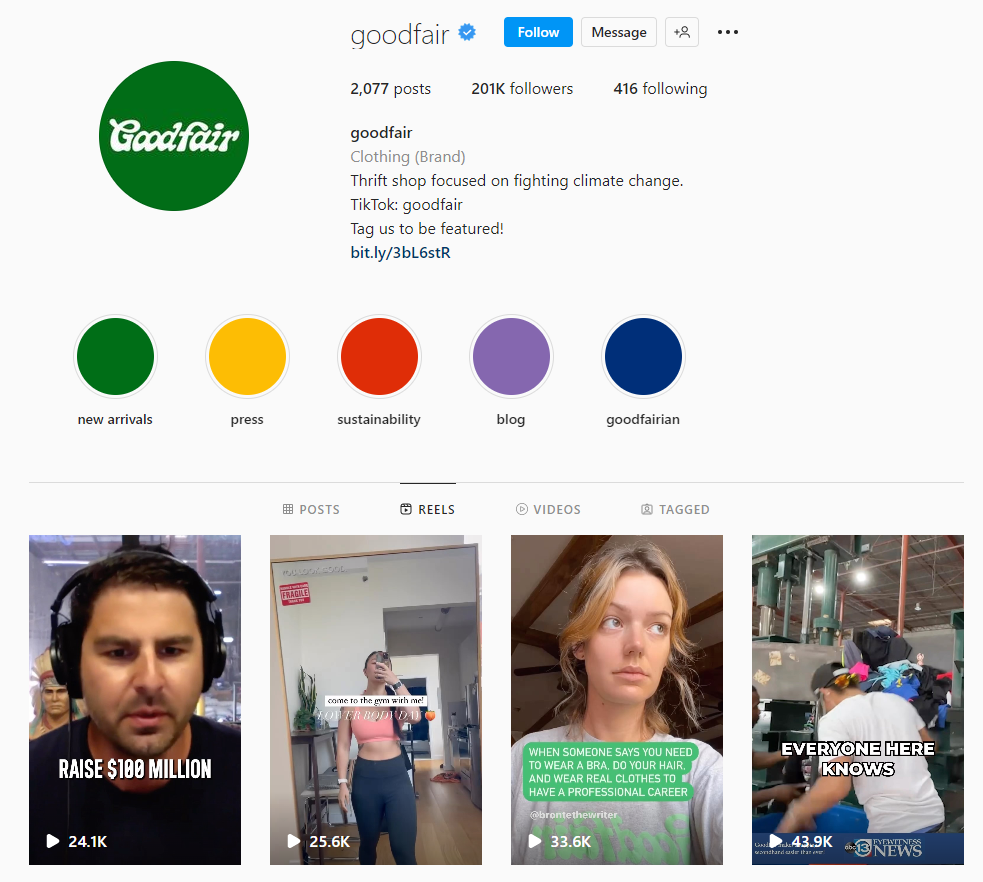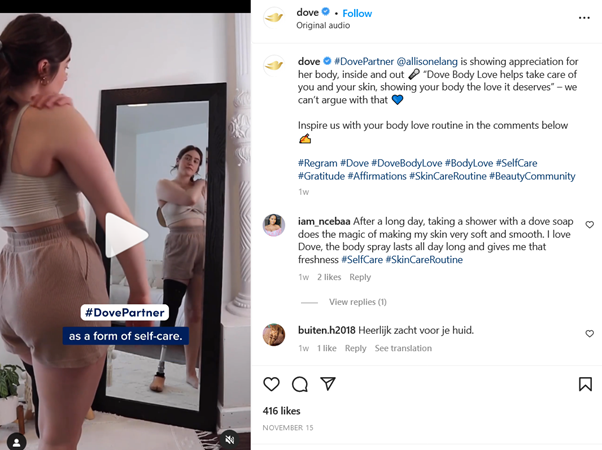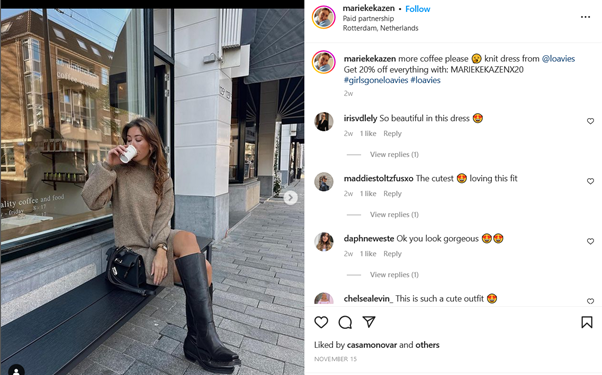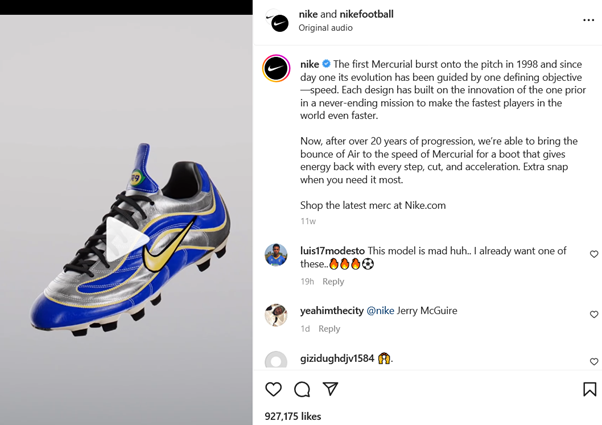6 Tips to Use Social Media Videos for Growing Sales
Social media videos are one of the most powerful ways to increase your sales and grow your eCommerce business.
In January 2022, almost 30% of internet users watched a video made by a brand. And results from a survey done on marketers and consumers showed that:
- Videos are the most common way consumers discover a brand they eventually buy from. It’s also the most helpful form of content for them as they shop online.
- Sharing a social media video has helped 93% of businesses land a new customer.
- Marketers advertising their businesses get the most ROI from videos.
These studies prove that you’re making the right decision by investing your resources in social media videos. But you need to do it the right way to experience positive results.
We’ll share with you 6 tips to help you share videos that improve your business’s sales performance.
Here are 6 tried-and-proven methods to create effective social media videos.
1. Keep Your Videos Short and Valuable
Make social media videos that are bite-sized and valuable to grow your sales. Keeping your videos short and sweet is an effective way of conveying your message quickly and encouraging conversions.
A study has shown information overload among consumers leads to slower decision-making. It also lowers the decision quality and could lead to wrong purchases.
A wrong purchase could affect the customers’ experience with the product, making them unlikely to become repeat customers. With short videos, you can overcome this issue.
With platforms like TikTok gaining popularity, it’s clear that consumers want to watch short videos too. This also reflects in the skyrocketing reach and popularity of Instagram Reels and YouTube Shorts.
The best part about these videos is that you don’t have to spend a long time creating them too as they’re short. You can easily shoot and edit them inside the app before publishing them. For instance, note how Goodfair has published numerous Reels and enjoys great engagement on them.

Image Source: Instagram
You can easily create ads from these short videos and drive traffic to your website from them to boost sales. Considering the high engagement such videos get, it’s a promising way to grow your revenue.
2. Make Your Videos Accessible
To grow your sales using social media videos, you should aim for maximum reach and engagement.
But there’s a hurdle that can hinder your engagement—videos on almost all social media platforms automatically play on mute.
And consumers who’ll watch them as they commute, queue, or while in other public spaces are likely to keep the sound off. In addition, if you’re targeting a global market, there’s a chance some of your potential customers will not be fluent in your language.
Adding subtitles and captions will make your social media videos easier for these customers to consume. It increases the number of people you reach and ultimately pushes your sales up.
See how Dove does it on their Instagram page.

Image Source: Instagram
Even without turning the sound on, the viewer can get the message through the subtitles.
3. Hook Their Attention in the First Few Seconds
If you want to engage your viewers with your social media videos and boost sales, hook them in the first few seconds. It’s during these first few seconds that viewers decide if they want to watch your video or move on to the next.
Here are some ideas that’ll stop them from scrolling and keep them interested:
- Add an element of surprise. Social media videos with attractive video thumbnails evoke viewers’ curiosity and encourage them to watch the content
- Begin with a thought-provoking question that teases the topic you’re addressing
- Start with powerful visuals, such as a captivating close-up shot that grabs their attention
- Give a fascinating fact
- Start with a ‘what if’. Create a hypothetical situation that’ll intrigue your audience
- Outline a pain point and hint at a solution
Avoid showing your logo or brand name at the beginning of your social media videos. It’s unlikely to get viewers invested enough to engage.
Instead, dive straight into the content. Provide immense value right away.
Finally, leverage analytics. Pay close attention to:
- Total views
- Watch time
- Viewer engagement
- Reach
- Repeat traffic
- Unique visitors
- Geographic hotspots
There are plenty of effective social media analytics tools you can use to gather this data as well.
Use the data insights you get to maximize your views and engagement, and boost sales from future videos. For instance, geographic hotspots can tell you what languages you should use in your subtitles.
4. Partner with Influencers
Working with a social media influencer is a quick-fire way of leveraging your video content for sales. Influencers can easily influence the buying decisions of their followers and having them publish videos on your behalf or featuring them in your videos helps you tap into their influence.
In fact, in one study where respondents were asked if they believed in traditional marketing messages, only 28% thought of them as trustworthy. About 38% disagreed and 33% were uncertain.
This is where influencers fill the gap.
Influencers have established relationships with their audience and are in tune with their needs.
They use their expertise, authenticity, and storytelling skills to build meaningful and trusting relationships with their fans. The audience trusts the influencer’s product recommendations.
For your influencer marketing strategy to work, find an influencer with an audience that matches your target market. An influencer marketing agency can help you find one who shares your values and fits your budget.
Micro-influencers tend to be a better option for marketers looking to increase their sales. These are influencers with 10,000 to 100,000 followers. They’re also more affordable for SMBs.
Although they have a smaller following, micro-influencers are experts in their niche and have a highly engaged audience. A product recommendation from them goes a long way in increasing your sales. The key, however, is to find the right micro-influencers who have an audience that matches yours.
Here is an example of Marieke Kazen, an influencer with about 14,000 followers, promoting LOAVIES.

Image Source: Instagram
Besides drawing her highly-engaged audience to the dress, she offers a 20% discount which is bound to boost sales a little more.
5. Leverage Live Video Shopping
A 2022 survey revealed that one of the perceived benefits of livestream shopping for 31% of consumers is making more informed purchase decisions.
This means that live video shopping, done well, has a great capacity to boost your ecommerce sales.
With platforms like Instagram offering live video shopping features, it’s now possible to not only promote your products in real-time but also sell them. In fact, there are numerous live video shopping platforms that you can use to drive your sales online.
With live streaming, you can also engage with the audience in real-time through Q&A sessions, chats, and polls. This real-time engagement can make all the difference in driving your sales. In fact, with live videos, you can manage viewer experience much better as it all happens in real-time.
Another option brands are now using is to go live on TikTok to increase engagement with their audience and also to demonstrate how a product works in real-time which increases brand trust. This works especially well for makeup brands or clothing brands.
But how do you increase the sales these videos can deliver?
Give discounts. In the same 2022 survey mentioned above, 35% of consumers said they attend livestream shopping expecting access to exclusive discounts. Attractive discounts will boost attendance and increase your sales.
Promote the event. Although some people might be lucky enough to catch your live video as they scroll their feed, it’s best to promote the event before the big day. Letting people know when the event is coming up will boost your attendance.
Work with influencers. As mentioned earlier, people trust their recommendations. Including them in your live video is thus a great way to boost your sales. You can have them provide valuable tips to the audience, unbox a new product, explain your product features, and more.
6. Post High-Quality Videos
Consumers expect nothing short of high-quality social media videos.
And even platforms like Instagram limit the quality of videos you can upload to the site. Instagram, for instance, expects a minimum frame rate of 30 FPS and a resolution of 720 pixels.
If your videos aren’t well-made, they’ll fail to make the impact. On the other hand, well-crafted videos can make all the difference in boosting your sales.
If presented flawlessly, they’re likely to be convinced of the quality of your products, thus increasing sales. And that’s why it’s essential to shoot and post-process the videos well.
Make sure you edit your videos thoroughly by leveraging a video editing platform like Movavi, Filmora, Animoto, and iMovie.
Here is an example of a high-quality video of Nike’s products.

Image Source: Instagram
See how every detail of the shoe is perfectly captured? That’s what you should aim for.
Here are a few tips to help you create high-quality videos:
- Use lots of natural light
- If you can’t access natural light, use a ring light that sheds enough light on the subject. Avoid relying on overhead lighting, it tends to create unflattering shadows
- Record the video in a silent space
- If possible, use an external microphone to get high-quality sound
- Use a tripod to keep your camera stable and avoid having a blurry video
Most marketers understand the power of social media videos in growing sales. And they’re doing what they can to post videos on their profiles. But very few are experiencing the full potential of these videos.
Why? They’re not applying the right tactics. Don’t fall into this category.
Make your videos brief and full of value. Make them accessible and of top-notch quality. And don’t forget to include live shopping and influencer-generated videos in your content calendar.
Apply these strategies and watch your sales soar.
Sell more, understand your customers’ journey for free!
Sales and Marketing teams spend millions of dollars to bring visitors to your website. But do you track your customer’s journey? Do you know who buys and why?
Around 8% of your website traffic will sign up on your lead forms. What happens to the other 92% of your traffic? Can you identify your visiting accounts? Can you engage and retarget your qualified visitors even if they are not identified?



